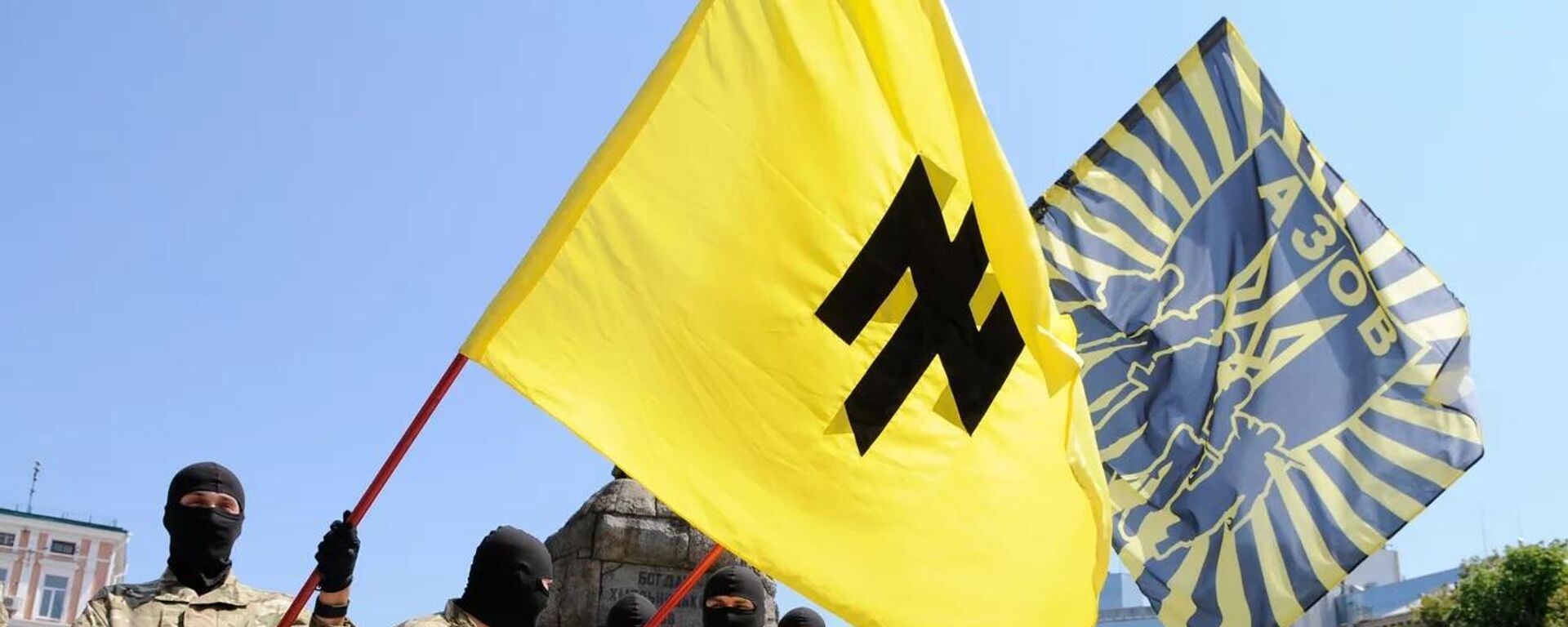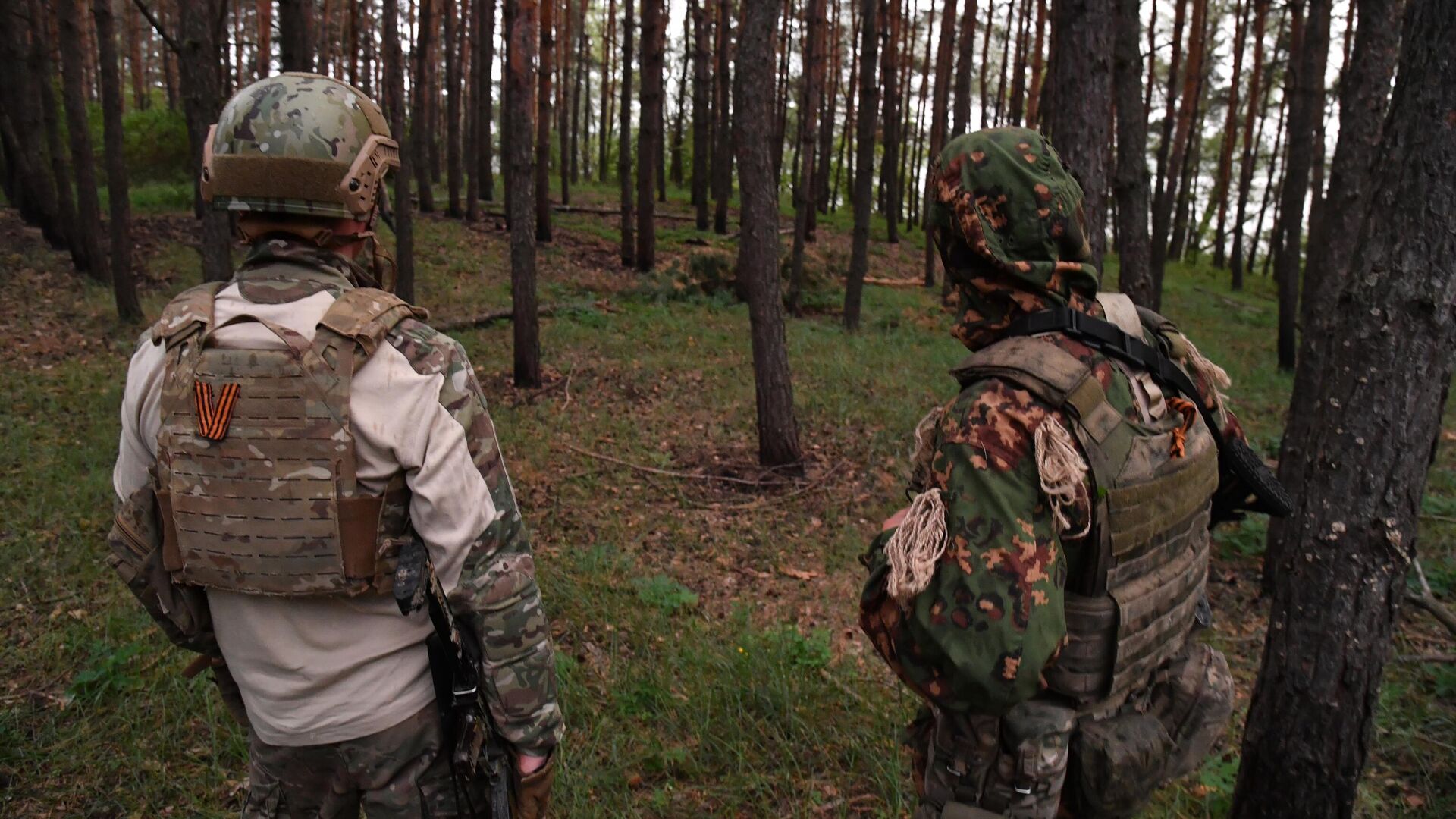https://sputnikglobe.com/20221118/over-10-russian-servicemen-shot-killed-in-cold-blood-by-ukrainian-forces-russian-mod-1104406026.html
Over 10 Russian Servicemen Shot, Killed in Cold Blood by Ukrainian Forces: Russian MoD
Over 10 Russian Servicemen Shot, Killed in Cold Blood by Ukrainian Forces: Russian MoD
Sputnik International
Earlier in the day, grizzly footage posted to social media from Makeevka, a settlement in the Lugansk People’s Republic taken by Ukrainian forces this week... 18.11.2022, Sputnik International
2022-11-18T14:17+0000
2022-11-18T14:17+0000
2022-12-08T16:26+0000
ministry of defense (mod)
russian precision strikes on ukraine
russian armed forces
ukrainian armed forces
russian military
pow
execution
war crimes
https://cdn1.img.sputnikglobe.com/img/07e6/09/15/1101034725_0:191:3072:1919_1920x0_80_0_0_e2a5292ff2b4c287bb9d9ccd67a3a1f7.jpg
Russia's Defense Ministry confirmed Friday that more 10 Russian troops had been executed in cold blood by "degenerates" from the Ukrainian Armed Forces.Video evidence of the suspected war crime in Makeevka demonstrates "the vicious essence of the current Kiev regime headed by Zelensky and those who protect and support him," the military added."The brutal murder of Russian PoWs is not the first and only such war crime, but common practice among the Ukrainian Armed Forces, actively supported by the Kiev regime, and not noticed at point-blank range by its Western patrons," the MoD said.The Russian military emphasized that Ukrainian servicemen captured by Russian forces this week are being held in accordance with the provisions of the Geneva Convention.Earlier in the day, footage posted to social media allegedly shot in Makeevka, a settlement in the Lugansk People’s Republic recently captured by Ukrainian forces, showed the execution of up to a dozen captured Russian servicemen.One video showed Russian troops exiting a bombed-out house one by one with their hands up and lying down on the ground. One of their comrades refused to surrender, opening fire on the Ukrainians with an automatic rifle, after which the video cut out. A second video, shot by a drone, showed twelve lifeless, unarmed Russian troops lying on the ground, in the same poses and locations they were in in the first video. Users suspected that the surrendered troops may have been killed ‘as punishment’ for their comrade who refused to give up.Valery Fadeyev, chairman of the Russian Human Rights Council, promised to send the video materials to international organizations and demand an investigation into the suspected war crime.Later Friday, the Office of the United Nations High Commissioner for Human Rights confirmed that it was examining footage of the incident.The executions at Makeevka are not the first time that Kiev has been accused of war crimes against Russian troops. In early April, footage emerged online showing Russian military personnel with their hands tied behind their backs being executed outside the Ukrainian capital. The detained PoWs are thought to have been killed by Georgian mercenary forces. In June, the Russian Defense Ministry announced that Russian forces liquidated members of the so-called 'Georgian Legion' thought to be involved in the torture and execution of unarmed Russian troops.In May, a French medical volunteer opened up to local media on how he witnessed members of the Azov Regiment - the notorious neo-Nazi fighting force operating under the aegis of the Ukrainian National Guard, shooting captured Russian troops in the knees, and shooting officers in the head.Also in May, the UN's Human Rights Monitoring Mission in Ukraine confirmed that it had "credible information" on the "torture, ill-treatment and incommunicado detention by [the] Ukrainian Armed Forces of prisoners of war belonging to the Russian Armed Forces and affiliated armed groups."Russia and Ukraine have carried out a series of prisoner exchanges in recent months. While some returned Russian prisoners have indicated that the conditions of their captivity were acceptable, others have complained of beatings, humiliations, and torture, including of a sexual nature.The Russian military and human rights groups have attributed part of the criminal behavior against Russian forces to the neo-Nazi formations such as Azov attached to regular Ukrainian detachments. Ukrainian prisoners of war captured by Russian and Donbass forces have also relayed stories of the neo-Nazis' crimes against even their own men, with a senior sergeant from a Ukrainian recon company telling Sputnik in April that ultra-right fighters used blocking detachment tactics to keep up fighting discipline and prevent desertion, threatening to shoot their own troops if they retreated.In September, Russia swapped 215 Ukrainian PoWs, including over 100 Azov fighters and foreign mercs, for 55 Russian PoWs and pro-Russian Ukrainian politician Viktor Medvedchuk. The release of the Azov fighters was heavily criticized in some corners of Russian society, with critics suggesting the PoWs should have been tried and imprisoned for suspected war crimes. Others, including family members of the released Russians, pointed to the importance of getting their loved ones home to safety, given the difficult conditions they often face in captivity.
https://sputnikglobe.com/20220407/danish-merc-confirms-ukrainian-forces-are-killing-russian-pows-1094566821.html
https://sputnikglobe.com/20221115/italian-police-foil-deadly-plot-by-neo-nazis-linked-to-ukraines-azov-battalion-1104265416.html
Sputnik International
feedback@sputniknews.com
+74956456601
MIA „Rossiya Segodnya“
2022
News
en_EN
Sputnik International
feedback@sputniknews.com
+74956456601
MIA „Rossiya Segodnya“
Sputnik International
feedback@sputniknews.com
+74956456601
MIA „Rossiya Segodnya“
war crime, execution, cold blood, russia, ukraine
war crime, execution, cold blood, russia, ukraine
Over 10 Russian Servicemen Shot, Killed in Cold Blood by Ukrainian Forces: Russian MoD
14:17 GMT 18.11.2022 (Updated: 16:26 GMT 08.12.2022) Earlier in the day, grizzly footage posted to social media from Makeevka, a settlement in the Lugansk People’s Republic taken by Ukrainian forces this week, appeared to show that a dozen captured and unarmed Russian servicemen had been executed by their captors.
Russia's Defense Ministry confirmed Friday that more 10 Russian troops had been executed in cold blood by "degenerates" from the Ukrainian Armed Forces.
"[Volodymyr] Zelensky and his henchmen will have to answer before the court of history, the peoples of Russia and Ukraine for every tortured and executed prisoner of war," the MoD said in a briefing Friday.
Video evidence of the suspected war crime in Makeevka demonstrates "the vicious essence of the current Kiev regime headed by Zelensky and those who protect and support him," the military added.
"The brutal murder of Russian PoWs is not the first and only such war crime, but common practice among the Ukrainian Armed Forces, actively supported by the Kiev regime, and not noticed at point-blank range by its Western patrons," the MoD said.
The Russian military emphasized that Ukrainian servicemen captured by Russian forces this week are being held in accordance with the provisions of the Geneva Convention.
Earlier in the day, footage posted to social media allegedly shot in Makeevka, a settlement in the Lugansk People’s Republic recently captured by Ukrainian forces, showed the execution of up to a dozen captured Russian servicemen.
One video showed Russian troops exiting a bombed-out house one by one with their hands up and lying down on the ground. One of their comrades refused to surrender, opening fire on the Ukrainians with an automatic rifle, after which the video cut out. A second video, shot by a drone, showed twelve lifeless, unarmed Russian troops lying on the ground, in the same poses and locations they were in in the first video. Users suspected that the surrendered troops may have been killed ‘as punishment’ for their comrade who refused to give up.
Valery Fadeyev, chairman of the Russian Human Rights Council, promised to send the video materials to international organizations and demand an investigation into the suspected war crime.
Later Friday, the Office of the United Nations High Commissioner for Human Rights confirmed that it was examining footage of the incident.
The executions at Makeevka are not the first time that Kiev has been accused of war crimes against Russian troops. In early April, footage
emerged online showing Russian military personnel with their hands tied behind their backs being executed outside the Ukrainian capital. The detained PoWs are thought to have been killed by Georgian mercenary forces. In June, the Russian Defense Ministry
announced that Russian forces liquidated members of the so-called 'Georgian Legion' thought to be involved in the torture and execution of unarmed Russian troops.
In May, a French medical volunteer
opened up to local media on how he witnessed members of the Azov Regiment - the notorious neo-Nazi fighting force operating under the aegis of the Ukrainian National Guard, shooting captured Russian troops in the knees, and shooting officers in the head.
Also in May, the UN's Human Rights Monitoring Mission in Ukraine confirmed that it had
"credible information" on the "torture, ill-treatment and incommunicado detention by [the] Ukrainian Armed Forces of prisoners of war belonging to the Russian Armed Forces and affiliated armed groups."
Russia and Ukraine have carried out a series of prisoner exchanges in recent months. While some returned Russian prisoners have indicated that the conditions of their captivity were acceptable, others have complained of beatings, humiliations, and torture, including of a sexual nature.
The Russian military and human rights groups have attributed part of the criminal behavior against Russian forces to the neo-Nazi formations such as Azov attached to regular Ukrainian detachments. Ukrainian prisoners of war captured by Russian and Donbass forces have also relayed stories of the neo-Nazis' crimes against even their own men, with a senior sergeant from a Ukrainian recon company
telling Sputnik in April that ultra-right fighters used blocking detachment tactics to keep up fighting discipline and prevent desertion, threatening to shoot their own troops if they retreated.
In September, Russia swapped 215 Ukrainian PoWs, including over 100 Azov fighters and foreign mercs, for 55 Russian PoWs and pro-Russian Ukrainian politician Viktor Medvedchuk. The release of the Azov fighters was heavily criticized in some corners of Russian society, with critics suggesting the PoWs should have been tried and imprisoned for suspected war crimes. Others, including family members of the released Russians, pointed to the importance of getting their loved ones home to safety, given the difficult conditions they often face in captivity.

15 November 2022, 22:43 GMT




